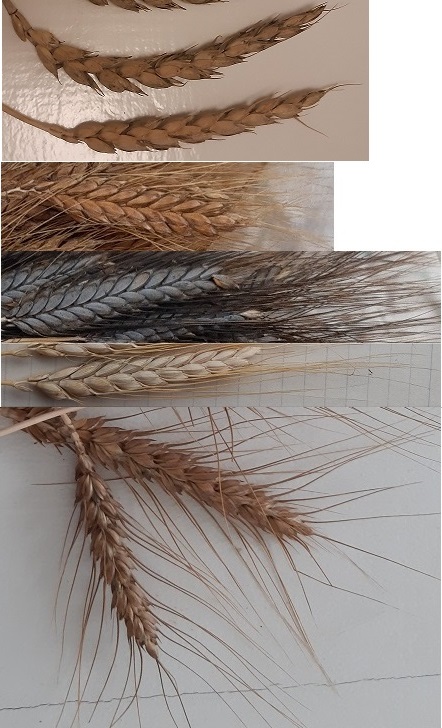Wheat (Triticum)

Wheat is one of the world's most grown cereals.
There are several different species and subspecies.
Wheat is either free threshing (hulless), where the grains are easily loosened from the glumes, and non free threshing (hulled), where the grains are still enclosed by the glumes, and must be rubbed free in special mills.
There are varieties that are sown in spring (called spring types), and varieties that are sown in autumn (called winter types), and after the winter they are harvested the next summer. Winter types generally give a larger harvest than spring types.
Winter wheat is normally sown in September in southern Sweden, but you can sow into the beginning of October, but this will yield less. Sowing earlier gives better established plants, which will give a better harvest next summer, but also increases the risk of lodging, plants killed by the winter, and diseases. When sowing early you need less seeds, when sowing late you need to increase the number of seeds per area unit.
Einkorn is a diploid wheat species.
Emmer, durum wheat and rivet wheat belong to the same tetraploid wheat species.
Bread wheat, club wheat and spelt wheat belong to the same hexaploid wheat species.
Zanduri wheat is its own tetraploid wheat species.